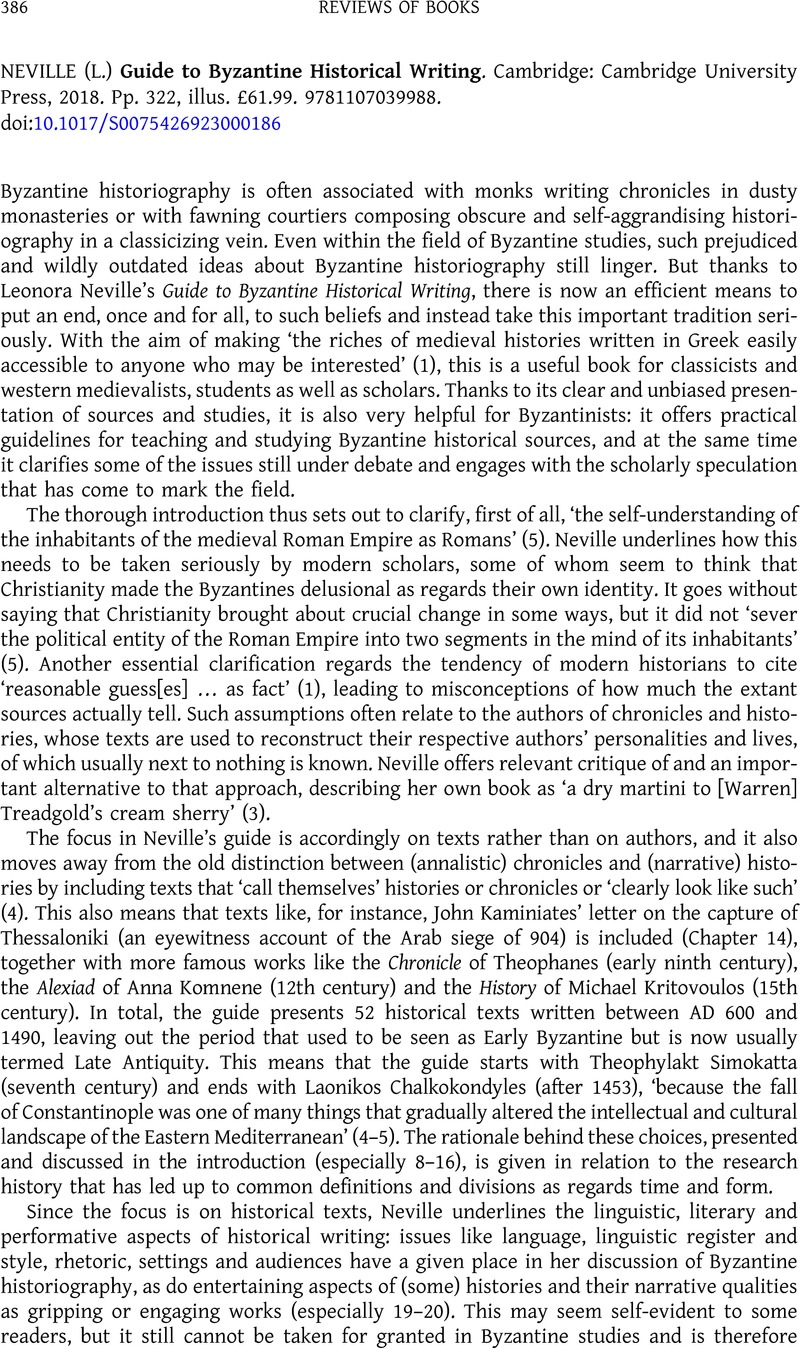No CrossRef data available.
Article contents
(L.) NEVILLE Guide to Byzantine Historical Writing. Cambridge: Cambridge University Press, 2018. Pp. 322, illus. £61.99. 9781107039988.
Review products
(L.) NEVILLE Guide to Byzantine Historical Writing. Cambridge: Cambridge University Press, 2018. Pp. 322, illus. £61.99. 9781107039988.
Part of:
Byzantine and modern Greek studies
Published online by Cambridge University Press: 11 April 2023
Abstract
An abstract is not available for this content so a preview has been provided. Please use the Get access link above for information on how to access this content.

- Type
- Reviews of Books
- Information
- Copyright
- © The Author(s), 2023. Published by Cambridge University Press on behalf of the Society for the Promotion of Hellenic Studies


